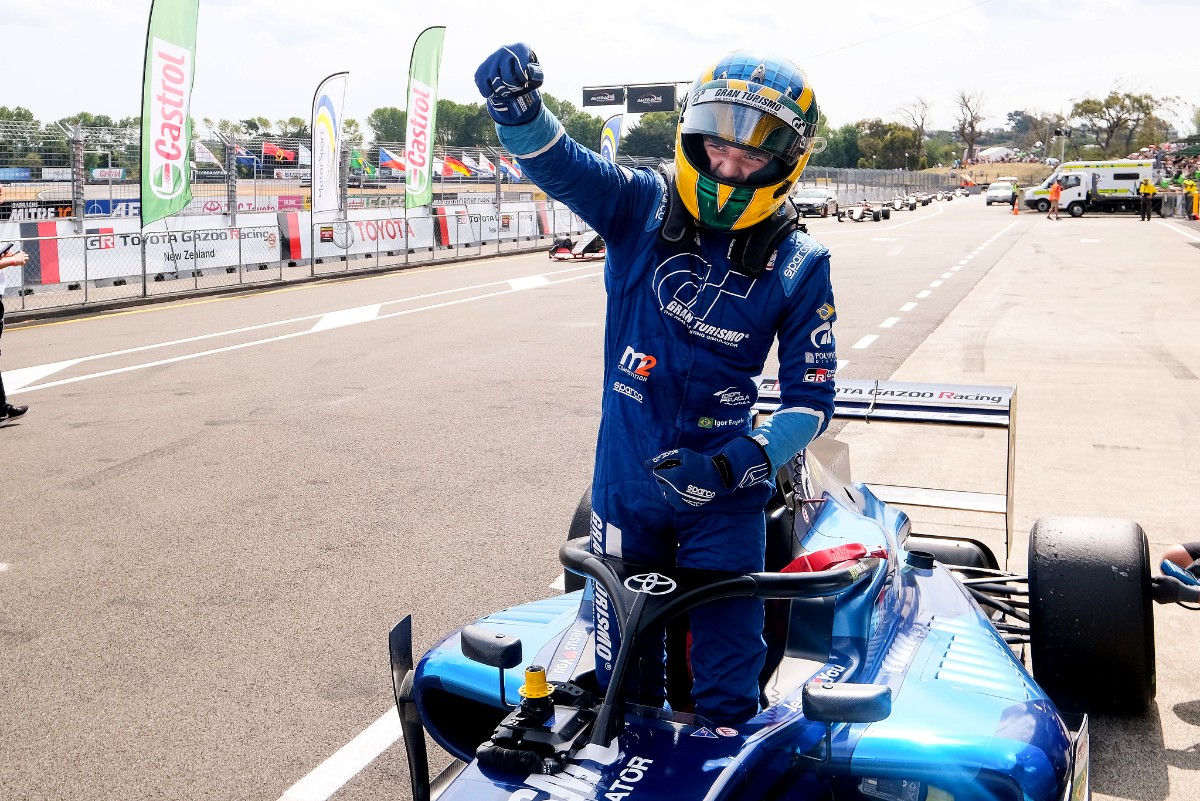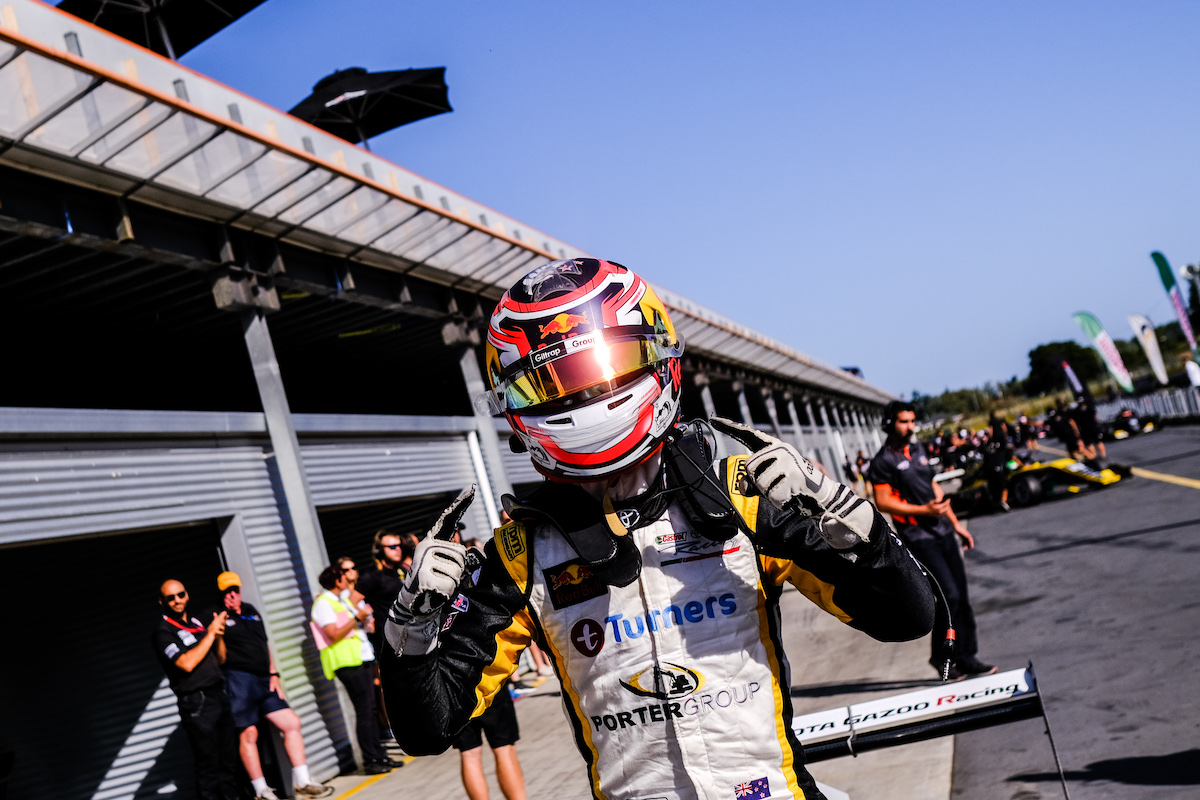
Photo: Toyota Racing NZ
Some of the biggest changes in Toyota Racing Series history were packed together for this year’s contest, and there was a lot to read in to. Here is a summary of the events down in New Zealand, and their impact
Last year’s TRS title battle between M2 Competition’s Marcus Armstrong and Liam Lawson was one for the history books, and reinforced the championship’s status as the top ‘winter series’ in junior single-seaters. The home-grown talents battled on track just as much as they did in the points table, and the dramatic conclusion to their battle in the New Zealand Grand Prix led to rookie Lawson triumphing and being signed by Dr Helmut Marko to the Red Bull Junior Team shortly after.
There wasn’t anticipation that this year’s TRS field would provide the same thrills, especially with the introduction of a new car and engine that had the potential to shake up the competitive order, but arguably the class of 2020 did.
This time it was Lawson who acted as the experienced barometer of success, and his debuting team-mates provided the sternest opposition in the high intensity five-week season.
Igor Fraga’s title shows TRS’s significance

Photo: Toyota Racing NZ
There are quite a few candidates for Brazil’s next Formula 1 driver, and Igor Fraga has put himself firmly in the group of names being feted after beating M2 Competition team-mate and reigning champion Liam Lawson to the TRS title.
It wasn’t just Fraga who was representing Brazil in the series, with Renault junior Caio Collet also racing. The highly-rated talent had a terrible campaign in comparison, while Fraga built up support in New Zealand due to his approach and results.
While Fraga is a friendly and hard-working driver, the build-up of praise around him showed the legitimacy that the motorsport community continues to give TRS which few other junior single-seater series have. Toyota’s support is proof alone, given the likes of Renault and Mazda have cut support of series in difficult times for automotive manufacturers, and Lawson himself is an example as his TRS title earned him F1 junior status immediately when his other accomplishments did not.
That’s because racing in TRS isn’t a month-and-a-half in the sun enjoying the wonders of New Zealand and racing out of the spotlight, as much as drivers’ social media would lead you to believe, but is closer to an intense reality television show competition when there are few other examples of racing for industry professionals to watch.
As a result, Fraga absolutely captured the imagination with his defeat of Lawson and made his name known in a way that will no doubt help his aspirations in short and long term. In FIA F3 he’ll be at a team with minimal expectations of success, but his TRS success should stick in the memory until at least 2021.
Lawson not at his best, but better than ever

Photo: Bruce Jenkins/TGRNZ
For those who hadn’t been watching his career closely, Lawson’s display of speed on his Asian Formula 3 debut late in 2018, where he won all three races at Sepang came as a big shock. That was the first time he raced the car that shares most of its properties with the one debuted in TRS last month, and Lawson immediately looked back at home with engineer Marc Wood.
His New Zealand Motor Cup win at Pukekohe, a track which returned to the TRS calendar after over a decade away, was an example of the still 17-year-old being in a class of his own, and his more measured responses to when things weren’t as easy showed a marked improvement from his Euroformula and TRS campaigns of 2019.
In qualifying he was usually, but crucially not always, able to put the lap needed together on his final attempt. The occasion where he couldn’t was for the title-deciding New Zealand GP, and was a major contributing factor to his title loss despite his margin of defeat in qualifying being just 0.018 seconds.
In all of the usual metrics of success, Lawson was top of the bunch. He had more wins, poles, fastest laps and podiums than anyone else, with his retirement at Hampton Downs caused a loss of power and a subsequent collision unfairly penalising him when a last place finish at that point would have still scored him five points and brought him one point shy of the title.
That race, and his failure to outqualify Fraga during the season finale, were the sore points for Lawson, but his increased maturity and cordial relationship was what helped bring the latter up to speed and ultimately beat him by a small margin.
Regardless, all the signs are that Lawson will be one of Prema’s chief opponents when he joins Hitech GP in FIA F3.
Eurocup involvement raised the level of competition

Photo: Bruce Jenkins / Toyota Gazoo Racing NZ
Personnel from European junior single-seater teams often end up working in TRS during their winter to earn some extra money, and sun, but the alignment of machinery between series on opposing sides of the planet led to formal associations between TRS’s mainstays and their European counterparts they usually ‘hire’ from.
The first of these was technically M2, which entered the Formula Renault Eurocup last year in addition to its main programme of TRS so it could get a headstart on the regional F3 car before it was introduced down under. R-ace GP followed by lending its Eurocup title-winning expertise to MTEC Motorsport, then MP Motorsport did the same with the rebranded Kiwi Motorsport (formerly Victory Motor Racing) but without the self-promotion – or the feted European F3 stars.
Kiwi was the most obvious beneficiary, with its driver Franco Colapinto challenging Fraga and Lawson all the way through to the final weekend and going on a solid podium run. Its usual four-car line-up was even less experienced than main rival M2, but it provided two different race winners and all but one of its six drivers showed genuine frontrunning pace by season’s end.
As with M2, it is expected that at least one of the drivers will be continuing with MP in the Eurocup.
R-ace GP worked that in both directions, with Collet essentially using TRS to keep sharp between Eurocup campaigns with the team. MTEC’s record going into 2020 had been 26 podiums in 10 seasons, but a last win in 2012 when the team was ETEC Motorsport.
Collet’s form from the off suggested R-ace’s input had boosted MTEC’s competitive positioning, with the Brazilian topping free practice and qualifying at Highlands Motorsport Park before pipping Lawson to the first win of the season. A post-race penalty for accelerating twice at a safety car restart undid his hard work, and then a race two crash ended his weekend early. He responded in style at Teretonga by going from fourth to first on the opening lap of the first race and taking a controlling win, but then failed to make the podium while two of his team-mates ended up taking poles and wins.
The other star rookie

Photo: Toyota Racing NZ
From the moment he first drove a single-seater car, Colapinto has raised eyebrows and attracted attention from some big names in motorsport. The patronage of Fernando Alonso last year helped with some of his finances, and propelled him to encouraging appearances in F3 within a year of his car racing debut.
It’s not a total surprise no F1 team has picked up the 16-year-old Argentinian though, as his dominant Spanish Formula 4 title was perceived by some to have been against weak opposition. The dominant part supports that argument, but when you isolate Colapinto’s performances in any of the cars he’s raced it makes for impressive viewing.
Colapinto’s Eurocup appearances gave him some applicable experience for TRS, but he wasn’t considered a title threat pre-season as he had signed with Kiwi rather than the usually dominant M2. The support from MP turned the team into a de facto frontrunner and Colapinto made the most of the opportunity.
He became the first non-M2 driver to get six podiums in a row since Giles Motorsport’s Mitch Evans in 2011, and remained in title contention until the penultimate race of the season. The Manfeild season finale was where he also took Kiwi’s first pole in three years. While its line-up was strong across the board, Colapinto scored more than all of his team-mates combined.
The comparision with Colapinto’s team-mates is relevant, as they were some of the less experienced in the field. Spike Kohlbecker came from two years in Formula Ford 1600, meaning he only had 2.5 days of slicks-and-wings experience in tests but did have circuit knowledge, United States F4’s Jose Blanco-Chock was signed for two rounds and didn’t star, and Spanish F4 rivals Axel Gnos and Tijmen van der Helm had similarly low racing mileage to Colapinto. Dutchman van der Helm also started the season late due to being underage.
The new car didn’t ruin the racing

Photo: John Cowpland / Toyota Gazoo Racing NZ
There were five races across three circuits in each season where representative comparisons could be made when it came to the number of overtakes taking place, and while it wasn’t all positive it can be definitively concluded that the introduction of the regional Formula 3 specification Toyota TF-60 did not diminish the on-track action in TRS.
The halo-shod chassis is usually raced under the Tatuus T-318 name and has been used in a variety of F3 series for the last two years, several of which have been noted for their lack of overtaking. This was not the case in TRS, where the teams are more closely matched and the disparity in the best and worst drivers in the championship was far less than say in FREC.
There are far less overtaking opportunities per lap in TRS due to many of the circuits being narrow and light on corners and length. At two of the five rounds, there were sub-minute laps recorded.
Using the previous Tatuus-designed Toyota TF-50 car, there were 43 recorded overtakes at Highlands in 2019. Two of the three races were interrupted by the appearance of the safety car, with the only clean race totalling 18 moves.
The story in 2020 was completely different, with the season opener including 38 overtakes. Nearly half of these occurred on the opening lap, but the 21 that took place in the remaining laps – that did include a safety car intervention – still surpassed 2019’s race one tally. What’s more, the 38 passes in total was just five short of the entirety of the previous year’s meeting.
At Teretonga it wasn’t the same, with the single race held there in 2019 including 53 passes. This year’s opening race had 29, and the other non-reversed grid race featured 18 passes, 11 of which came on the opening lap. Race one at Hampton Downs followed the script of the previous year, with an identical 31 overtakes and the majority of them taking place at the start.
The data is inconclusive when it comes to making a mathematical assessment of the new car’s impact, but from a punter’s point of view the fights through the field – especially at the front – were just as exciting to watch as ever.